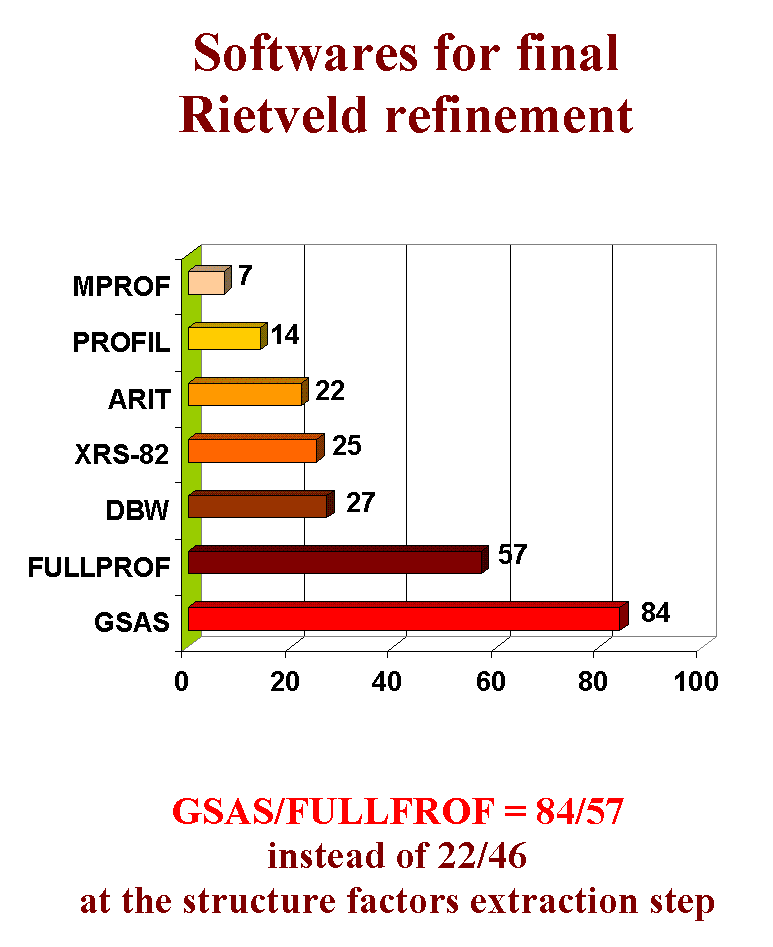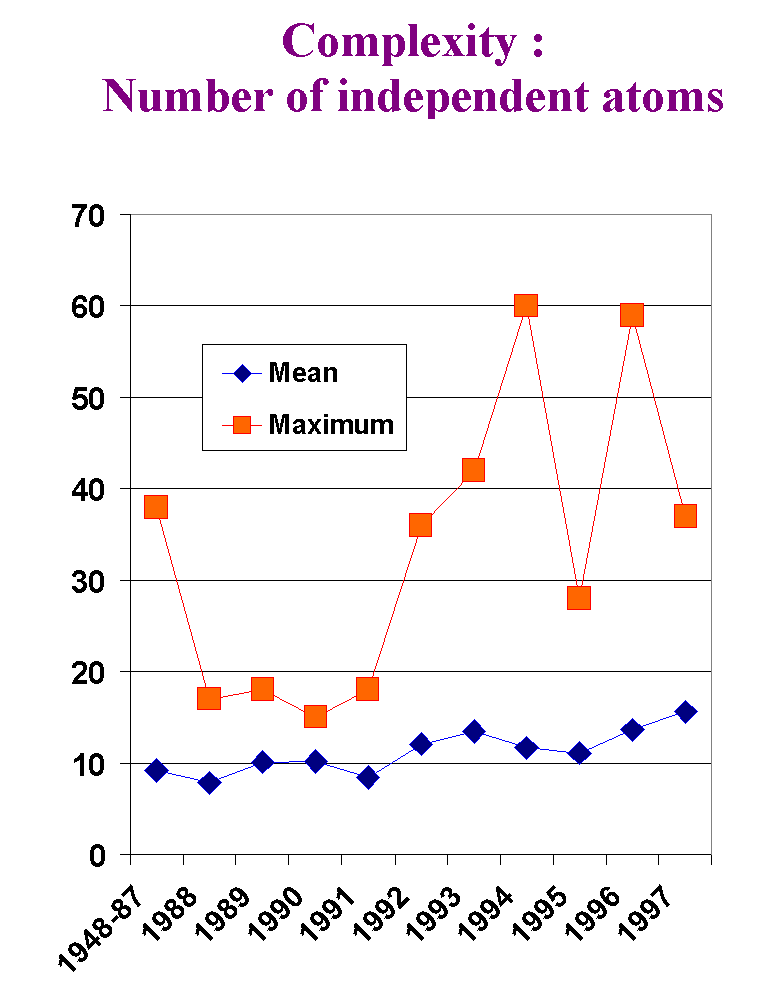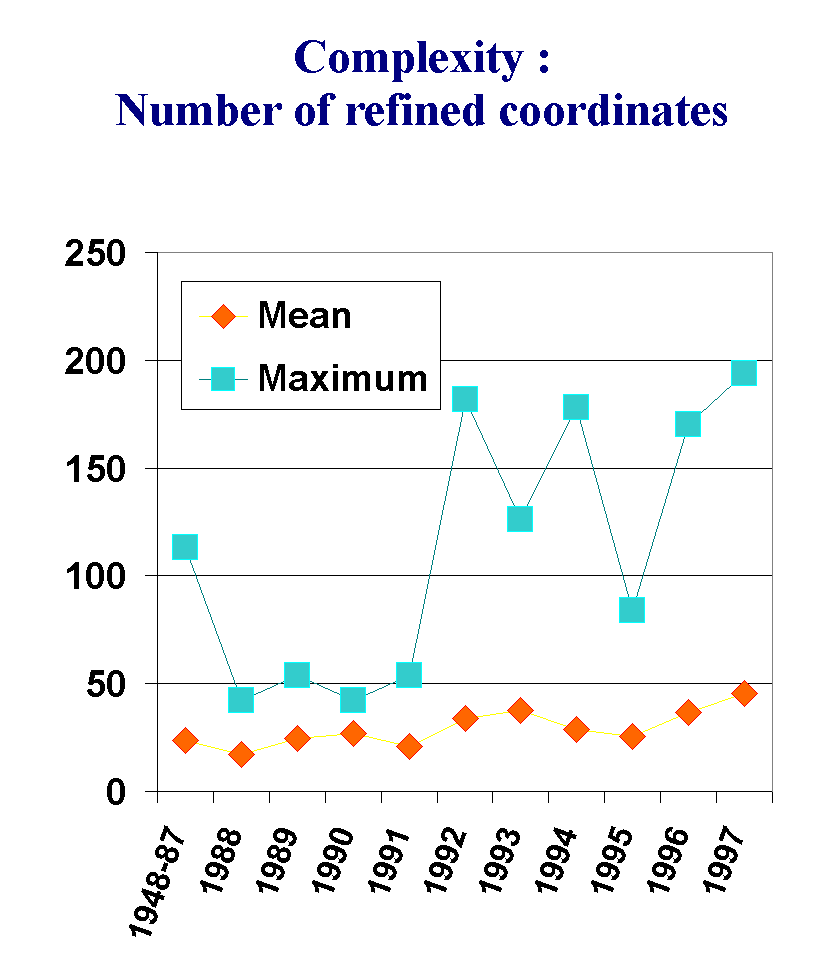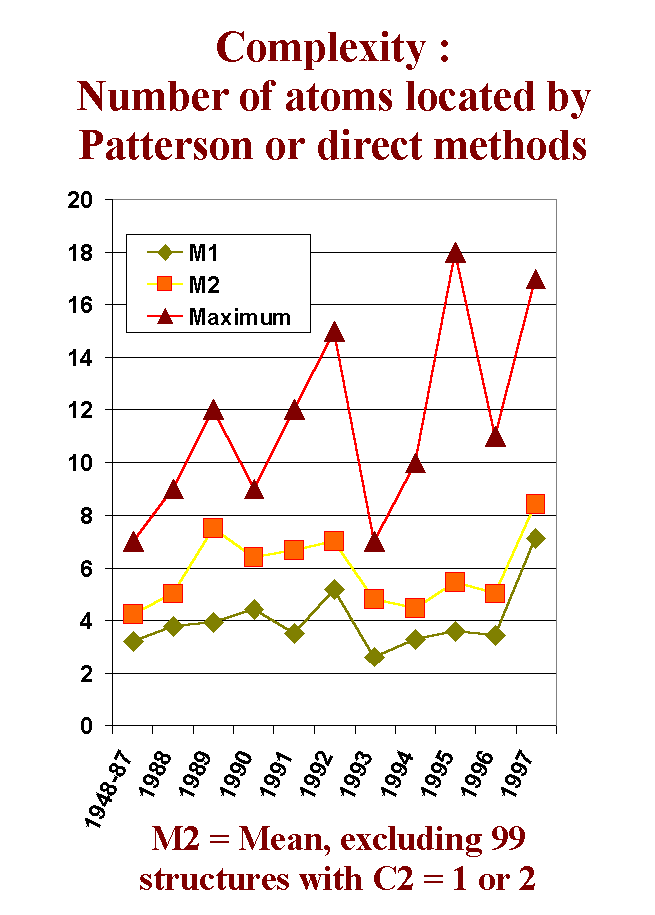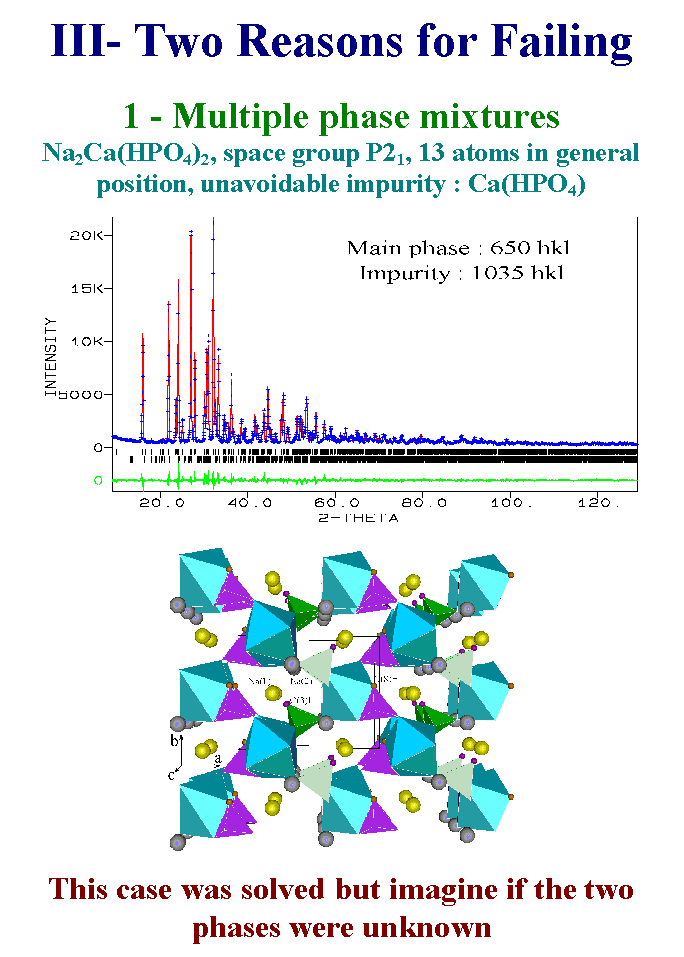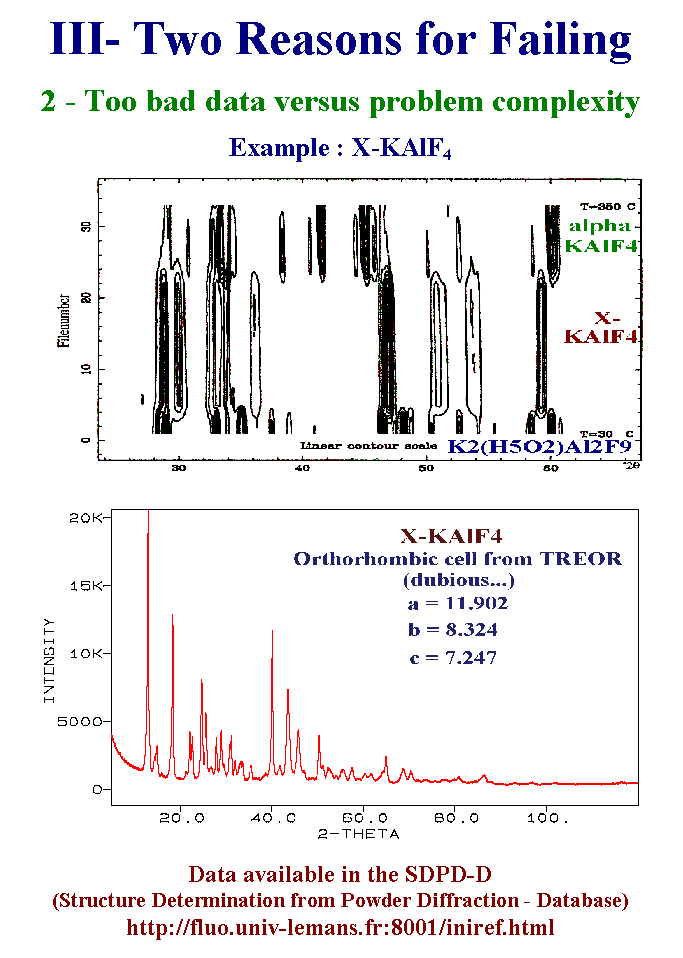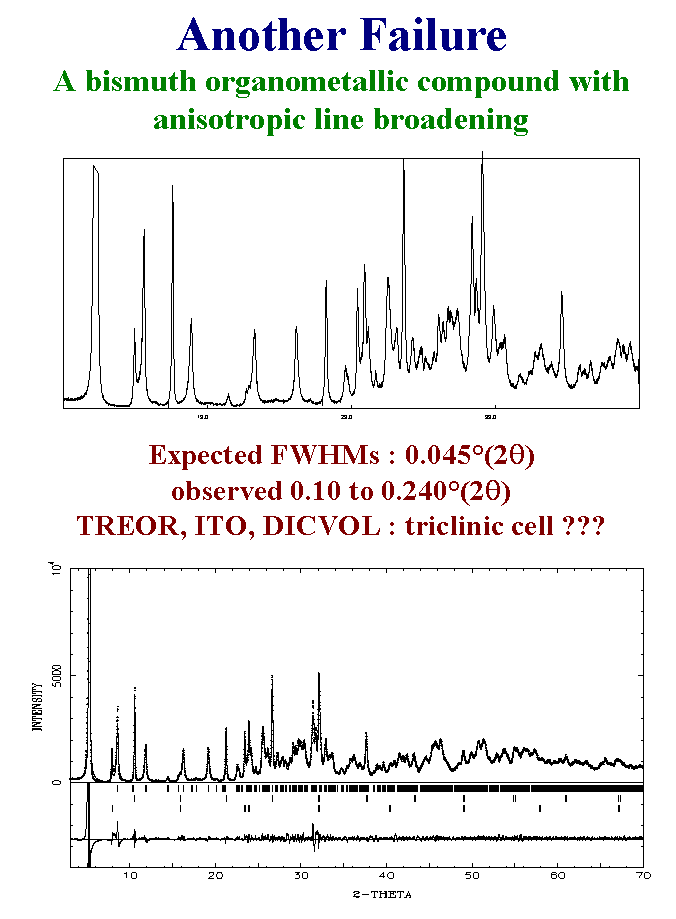Retaining an atom site as proposed by direct or Patterson
methods is a question of common sense
according to your knowledge of the compound.
When you believe having obtained a starting model,
you have to test the hypothesis by using a single
crystal refinement program applied to your "|Fobs|".
The best approach is to try the proposition
on a reduced dataset.
A model which corresponds to a reliability R less than
40-35% begin to interest me, a fortiori if peaks extracted from
the Fourier difference synthesis make sense.
Once it has become impossible to extract more informations
from the "|Fobs|" set (reduced),
and if the model seems coherent,
it is time to apply the Rietveld method.
The crystal structure will not be always complete at
this first
Rietveld method application so that the extraction of
new "|Fobs|" at the last Rietveld refinement cycle and their new injection
into any single crystal refinement program will allow to go further if
a new Fourier synthesis reveals new sites.
The process has to be repeated up to complete satisfaction.
Results which should be submitted for publication are those of the last
refinement by the Rietveld method.
Never consider the SHELX result as the final one, the Rietveld method is the only recognized method for powder data refinement !
Na2C2O4
It is time to examine the 3
propositions
from SHELXS86.
Confirmation of the model credibility is obtained.
In fact, STRUVIR already recognizes the presence of NaO6 octahedra (see the 3D model).
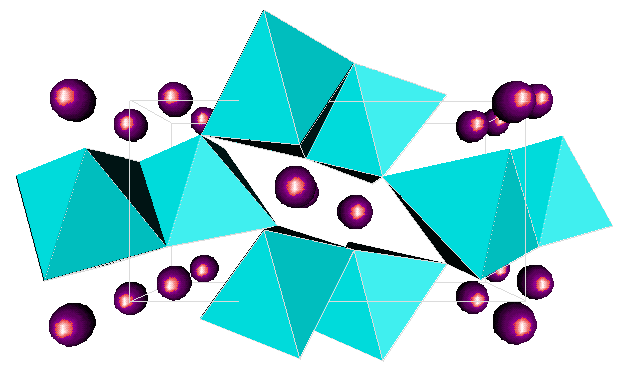
With this model, the refinement program SHELX76 is applied on the 242 hkl (the most reduced dataset) and the R factor fall down to 25% after 4 refinement cycles.

Looking at the Fourier difference synthesis,
nothing more is found.
The ultimate confirmation has to be obtained from the
Rietveld method.
After refinement of a scale factor only, by using the FULLPROF program, one minute later, the model is definetely confirmed by rather low reliability factors.

Ultimately, all the refinable parameters are allowed to move by the Rietveld method.
The thermal parameters are first refined as isotropic
(RP = 11, RWP = 13, RB
= 8%),
then they are made anisotropic
(RP = 7.6, RWP = 8.8, RB
= 5.0%),
this is possible because all atoms are "light" atoms.
Finally a preferred orientation is believed to exist
in spite of the use of a vertically loaded sample holder
(direction [001], March-Dollase parameter of 1.09
indicating in principle needles along the c axis, so that all the other
orientations are preferred).
Judge of the final refinement
quality
(RP = 5.7, RWP = 7.2, RB
= 2.6%) :

[Pd(NH3)4]Cr2O7
With all the heavy atoms located (Pd and Cr) together
with some N and O atoms, a refinement by the Rietveld method is
the best thing to do.
Reliabilities decrease quickly to RP = 24.6,
RB = 20.3, RF = 11.2 % after the FULLPROF
application.
In order to complete the structure, the "|Fobs|" estimated
at the end of the Rietveld method application will be used by SHELX76.
The
Fourier difference synthesis
is in this case not very well exploited by SHELX76 which does not propose
many interatomic distances.
It is time to examine if the new atom sites as proposed
by SHELX76 are convincing.
The file is quickly prepared, STRUVIR recognizes a complete CrO4 tetrahedron and square planes PdN4 for the two palladium sites.
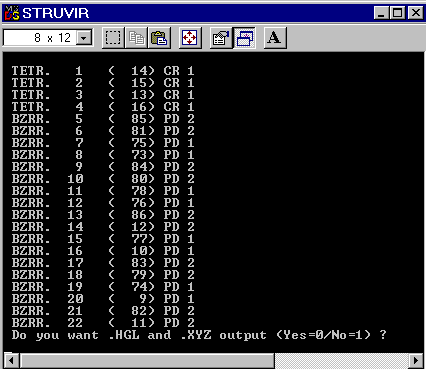
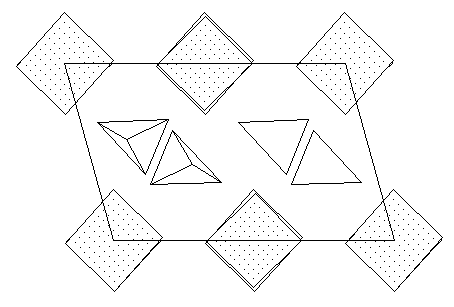
The interatomic distances show that peaks Q1, Q5 and Q7 from the Fourier difference synthesis will constitute acceptable N atoms whereas peaks Q3, Q9, Q11 and Q12 will reasonably correspond to oxygen atoms.
t-AlF3
The refinement of the positions of the 11 independent
atoms as provided by the direct methods leads to the definitive
result.
Further improvement could be obtained when refining
anisotropic thermal parameters for all atoms
(justified because all atoms are light in this compound).
beta-BaAlF5
The refinement of the positions of the 13 independent
atoms by the Rietveld method leads to
RP = 14.3, RB = 11.1 and RF
= 5.5 %.
A Fourier difference synthesis made by the SHELX76
program allows the location of the lacking Al atom
well positioned in an AlF6 octahedron.
The structure appears now complete as revealed by a
STRUVIR plot, the Q2 and Q5 sites being attributed to Ba atoms.
This structure determination from the low resolution
neutron data may looks like a miracle.
Use preferably X-ray data for determining a structure
containing heavy atoms.
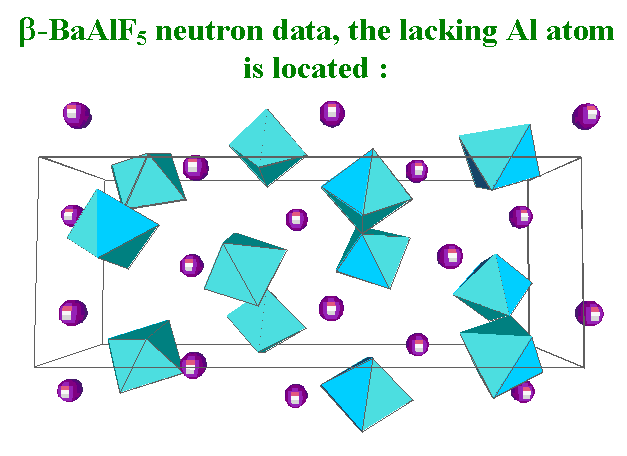
Cimetidine C10H16N6S
Introducing the 17 atoms as refined by SHELXL-97 into
a Rietveld refinement by FULLPROF led to
RP = 12.4 %, RB = 7.73 %, RF
= 7.55 %.
The C10N6S part of the structure
is complete.
Most of the hydrogen atoms are then located by a Fourier
difference synthesis realized by SHELXL-97 on the new "|Fobs|" generated
by FULLPROF.
